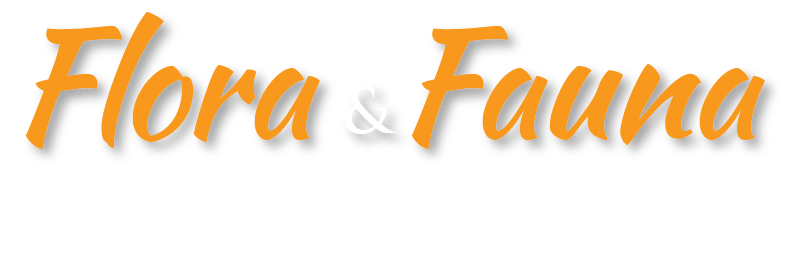
Salta combines many different
landscapes, from the high dry desert
of the Puna to the exuberant jungle.
Nature’s generous bounty is seen in the province’s three national
parks: Baritú, Los Cardones and El Rey. Salta is one of the provinces that better
cares its environment and a 16 % of its territory is protected.
ANIMALS
In Salta you can find an incredible diversity of animals thanks to its geographical diversity. From camelids like flames, vicunas, guanacos and alpacas to jungle animals such as monkeys or jaguars. In the region of the “Chaco Salteño” you can find peccaries, anteaters and brown brocket deers.
BIRDS
The geographical diversity, variations in height, different microclimates and eco-regions turn Salta into a splendid scenario for bird watching. Its vast territory is home to 65 % of Argentine bird species, 657 species of the 1.000 that live in the country are found in Salta.
LOS CARDONES NATIONAL PARK
With more than 64,117 hectares, its main objective is the preservation of the cactus, the most characteristic species of the region. Tradition has it that the cacti are ancient people who watch and protect our lands.
BARITU NATIONAL PARK
This park protects the Yunga or mountain jungle and stands out for its fauna of large mammal such as the jaguar, taruca (southern Andean deer of the North) and the tapir, endangered species. This is the ideal place for wildlife observation and bird watching.
EL REY NATIONAL PARK
This national park, with an extraordinarily varied geography, covers areas of the yungas forest and the Chaco woodlands and safeguards species like tapirs, toucans, chuñas and pecaríes.
RESERVES AND NATURAL MONUMENTS
FINCA LAS COSTAS RESERVE
Located in San Lorenzo, with an area of 10,500 hectares, was created to conserve the yungas forests and the drinking water source of the city of Salta and San Lorenzo. Laurel, creole walnut, cedar, alders and pine, and varied fauna such as puma, collared peccary and brocket deer can be found. Guan, Andean condor, red-tailed comet and woodpeckers are some of the highlights.
QUEBRADA DE LAS CONCHAS NATURE RESERVE
With an area of approximately 25,874 hectares in the departments of La Viña, Cafayate Guachipas, it protects resources and beautiful scenery of La Quebrada de Las Conchas and surrounding areas. The vegetation of the protected area has species such as horco quebracho, guayacán (guaiac), white quebracho, molle, cactaceae and two species of cacti. The fauna includes guanaco, wildcat, collared peccary and corzuela (red brocket deer). Among the birds are the condor and the burrowing parrot.
ACAMBUCO WILDLIFE RESERVE
Located in Aguaray, has an area of 36,734 hectares, was created to promote the ecological restoration of the environment of the foothill forest. It has forest species such as palo blanco tree, palo amarillo, cebil, native walnut and cedar. The presence of jaguars, tapirs, peccaries, capuchin monkey, coati and squirrel of the Yungas represent its fauna. Among birds, the green macaw, lonely eagle and ornate hawk-eagle can be mentioned.
LAGUNA PINTASCAYO PARK
It was created to preserve a sample of the piedmont forest and to protect the largest lagoon of the Argentine Yungas. Located in Orán, it covers 13,000 hectares. The species living there are jaguars, pumas, ocelots, tapirs, capybaras, red-rumped agoutis, red brocket deers, crab-eating raccoons, capuchin monkeys and broad-snouted caimans. Also birds like Pomay eagles, Tucumán Amazon parrots, yapús, blue-crowned motmots, jabirus, anhingas and mallards. Palos amarillos, urundels, field bindweeds and white laurels sand out among the flora.
ANGASTACO NATURAL MONUMENT
It was created to protect the scenic beauty of the Quebrada de las Flechas. It covers an area of approximately 1,200 hectares and is located on Route 40, Angastaco. The monuments lies within the ecoregion of forest and prepuna, its flora is represented by black and white locusts, brea trees, creosote bushes, molles and creeping cacti. Some of the mammals that inhabit it are the big-eared bats, cuises (southern mountain cavy) and small gray foxes.
LOS PALMARES WILDLIFE RESERVE
The reserve conserves a representative sample of the dry Chaco, with a little community of native palms. It covers an area of 10,000 hectares and is located in department of Anta. The flora includes the emblematic white palm and palo santo, red quebracho, guaiac, mistol and chañar can also be found. It hosts three species of peccaries, anteaters, brown brocket deers and vizcachas. Darwin’s rheas, Chaco chachalacas, blue-fronted parrots, southern screamers, jabirus, guans, white-faced whistling-ducks, rosy-billed pochards and Brazilian ducks can also be observed.
THE ANDES WILDLIFE RESERVE
It has an area of 1,440,000 hectares and is located in The Andes department. Its aim is to conserve the wildlife, floristic, soil resources and to study and apply development techniques and rational utilization of these renewable resources. The area protects representative samples of two ecoregions in Argentina, Puna and High Andean region. The presence of species such as vicuña, Andean cat, Southern flamenco, small and large parina, crested coot and guayata (Andean geese) is pointed out.
